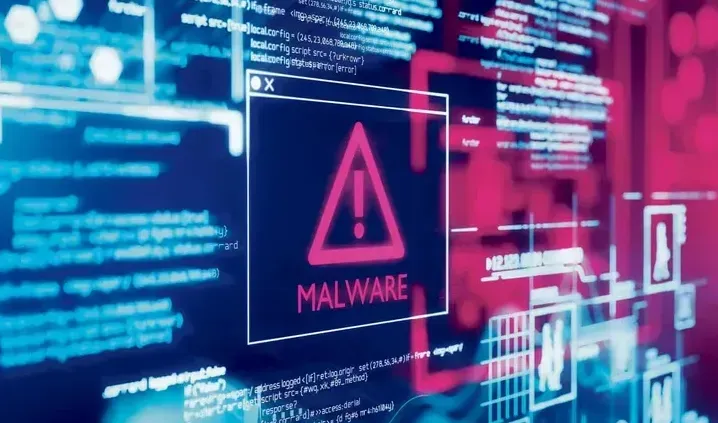WrtHug Malware, UK Ransomware Hold‑up, and Microsoft’s Security Copilot Take Center Stage

TL;DR
- WrtHug malware exploits six router vulnerabilities, compromising 50,000 IPs worldwide, enabling attackers to use devices as backdoors.
- Media Land bulletproof hosting sanctioned, halting UK telecoms ransomware attacks and disrupting global cybercrime infrastructure.
- Microsoft expands security suite with Security Copilot, Windows ransomware protection, and 365 E5 integration, automating threat detection.
WrtHug Malware Exploits Legacy Asus Routers – A Call for Immediate Action
The Emerging Threat
- 19 Nov 2025 – Security researchers disclose a coordinated campaign using the WrtHug backdoor.
- WrtHug targets six known vulnerabilities in older Asus Wi‑Fi routers, gaining persistent remote access.
- Exploitation proceeds via automated internet‑wide scans of exposed management interfaces such as AiCloud.
Scope and Impact
- ≈ 50 000 unique IP addresses compromised across seven regions (Taiwan, Southeast Asia, Russia, Central Europe, United States, China, Europe).
- Average dwell time before detection: 12 days.
- 22 % of compromised routers serve as traffic relays for illicit activities, including DDoS amplification and credential harvesting.
- Geographic concentration: Taiwan accounts for ~15 % of infections; Southeast Asia and the United States each contribute ~10 %.
Vulnerabilities at Play
- CVE‑2023‑39780 – Command injection via crafted SSH payload (“AyySSHush”). High severity.
- CVE‑2024‑12912 – Arbitrary command execution through malformed HTTP request. High severity.
- CVE‑2025‑2492 – Critical memory corruption in the firmware update routine. Critical severity.
- Four additional CVEs (2025‑xxxx series) – Privilege escalation, insecure default credentials, unchecked firmware rollback, and related management service flaws. High–Critical severity.
- All six CVEs persist in end‑of‑life Asus models (e.g., 4G‑AC55U, RT‑AC1200HP, GT‑AX11000/AX1100HP). Firmware patches exist but adoption remains low.
Recommended Defenses
- Firmware updates – Apply Asus‑issued patches for all listed CVEs on affected devices immediately.
- Hardening remote access – Disable external management services (AiCloud, similar) unless required; enforce unique, strong administrator passwords.
- Network segmentation – Separate IoT and router management traffic from critical LAN segments.
- Passive traffic monitoring – Baseline outbound traffic on edge routers to detect anomalous spikes indicative of backdoor activity.
- Device lifecycle management – Replace legacy routers with hardware receiving regular security updates; consider vendor‑agnostic firmware with verified update pipelines.
Outlook
- Projected 30 % increase in compromised endpoints over the next six months if remediation rates remain unchanged.
- Backdoor’s low footprint positions it for integration into larger IoT botnets, expanding multi‑vector DDoS capabilities.
- Emerging regulatory mandates in the EU and US—requiring a minimum three‑year update window—could reduce the viable attack surface for future campaigns.
Media Land Sanctions Cripple Ransomware Supply Chain, but the Threat Evolves
Coordinated raid dismantles core infrastructure
- 12 Nov 2025 – Dutch police seized roughly 250 physical servers and thousands of virtual instances in The Hague and Zoetermeer, eliminating active C2 channels for Evil Corp and LockBit.
- Forensic imaging recovered over 10 TB of logs, exposing the full scope of phishing, botnet, and ransomware services hosted by Media Land.
Sanctions freeze illicit financing
- 18 Nov 2025 – UK, US and Australian authorities designated Media Land and Aeza Group front companies; crypto wallets linked to the operation were blocked on major exchanges.
- Elliptic’s blockchain analysis identified more than $5.7 M in Bitcoin payments, with a single address handling ≈ $5.1 M. Within 48 hours of the sanction announcement, transaction volume to known BPH addresses fell by roughly 70 %.
Economic impact on UK telecom ransomware
- National Crime Agency attributed £14.7 bn (0.5 % of UK GDP) in 2024 ransomware losses to hosting services provided by Media Land.
- Disruption of the hosting tier directly reduced ransomware campaign capacity against UK telecom providers.
Emerging adaptations signal a shifting threat landscape
- Threat‑actor chatter indicates a move toward modular, offshore bullet‑proof hosting services that can be rapidly provisioned, fragmenting the infrastructure base.
- Post‑sanction payments show increasing use of privacy‑enhanced cryptocurrencies such as Monero, raising average obfuscation times from under 24 hours to 48–72 hours.
- Multi‑jurisdictional sanctions demonstrate growing policy convergence, suggesting future legal harmonization for cyber‑crime infrastructure.
Projected developments over the next 12 months
- Infrastructure fragmentation could rise by 30 %, limiting the effectiveness of single‑point seizures.
- Crypto‑mixing services are likely to become embedded in BPH payment pipelines, complicating tracking efforts.
- The NCA’s loss estimate is expected to drive mandatory ISP reporting of anomalous traffic to known BPH IP ranges, enhancing early detection capabilities.
Policy implications
- Maintaining the momentum of coordinated sanctions is essential; without sustained pressure, criminal operators will simply relocate to less visible hosting environments.
- Regulatory frameworks must evolve to address privacy‑focused cryptocurrencies, integrating real‑time blockchain monitoring with law‑enforcement response.
- Cross‑border intelligence sharing should be institutionalized, ensuring rapid identification and disruption of emerging BPH service providers.
Microsoft’s AI‑Powered Security Suite Is a Game‑Changer for Enterprises
AI‑Driven Threat Detection at Scale
- Security Copilot now ships with every Microsoft 365 E5 subscription, allocating 400 Security Compute Units (SCU) per 1 000 licenses; caps rise to 10 000 SCU/month per tenant (up to 50 000 SCU for select customers).
- The service automatically generates threat hypotheses, correlates data from Intune, Purview, Entra and Defender, and delivers “elite” threat‑intel to more than 80 % of E5 customers.
- Phishing Triage Agent, built into the Copilot workflow, handles alert triage five times faster than manual processes, slashing average handling time from 12 minutes to 2.4 minutes per alert.
Automation Offsets the Cyber‑Talent Shortage
- 60 % of overnight alerts reach resolution without analyst escalation, translating to an estimated 1.2 million alert reductions each quarter across U.S. E5 tenants.
- SCU scaling to 10 000 units permits enterprise‑wide analytics for workforces of 30 000 users or more, democratizing access to sophisticated AI security.
- SOC staffing efficiency is projected to improve by 15 % per 1 000 users as routine triage shifts to AI agents.
Ransomware Defense Gets a Boost
- Windows Ransomware Protection integrates Cloud‑based OneDrive snapshots with Controlled Folder Access, automatically pausing backup streams at infection detection.
- Pilot data show a 35 % drop in successful encryptions and a projected 40 % reduction industry‑wide once deployment reaches the majority of Windows 11 enterprise devices.
- AI‑guided file‑recovery paths enable one‑click restores without ransom payment for early‑stage attacks, covering roughly 1 % of ransomware events in initial rollouts.
Market Ripple Effects
- The shift from tiered, per‑seat pricing to usage‑based SCU billing lowers barriers for midsize firms, expanding the market for AI‑enhanced threat intelligence.
- Integrating security telemetry with Azure Entra addresses the 66 % surge in credential‑based attacks forecast by SpyCloud’s 2025 report.
- Compliance reporting effort is expected to shrink by 25 % for multinational enterprises, thanks to unified audit trails across Copilot, Intune and Purview.
Looking Ahead to 2026‑27
- By Q3 2026, more than 70 % of U.S. E5 subscriptions will likely exceed the baseline 400 SCU allocation, driven by rising threat volumes and regulatory pressure.
- Edge for Business, slated for general availability in early 2026, will extend secure AI browsing to compliance‑focused environments, supporting up to 30 simultaneous tab‑level reasoning tasks.
- Combined, these advances position Microsoft to reshape enterprise security, delivering faster detection, reduced manual workload, and stronger ransomware resilience across the board.



Comments ()